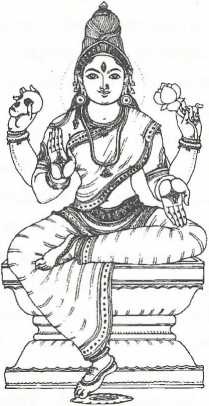Talk:Camunda
Cāmuṇḍā Mother worship and Mother cult are not alien to Vedic religion as some suggest. The concept of Aditi (mother of gods and
a personification of nature) as also the Ambhrnisukta and the Rātrisukta of the Rgveda clearly contain the origins of the worship of God as Sakti or the Divine Mother. One of the early basic texts of the Sakti cult is the Devīmāhātmya also called Durgāsaptaśatī or Candl. According to this, Kālī, one of the aspects of Durgā that emanated from her forehead, killed the two demons Caṇḍa and Muṇda, gene¬rals of the demon king Sumbha, and got this name. She is described as a fierce goddess, black in colour, emaciated and wearing the cheetah skin as also severed human heads. Her mouth and tongue were of immense proportions. She could kill troups of demons at one stroke and could swallow several elephants in a gulp. Cāmuṇḍā is sometimes included in the list of ‘Saptamātṛkās’ or ‘Seven Mothers’, in the place of Nārasiiṅhī. She actually symbolizes the power of time in its all-destroying aspect. The word is also spelt as Cāmuṇḍī. See also DURGĀ, KĀLĪ and SAPTA- MĀTRKĀS.


